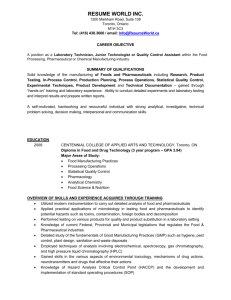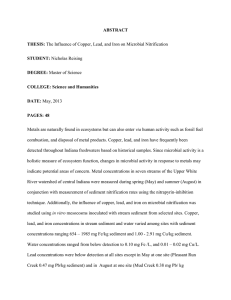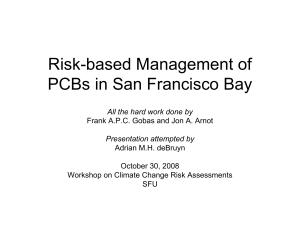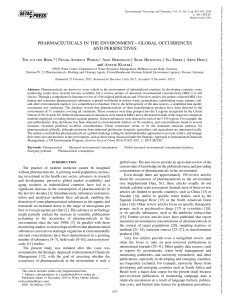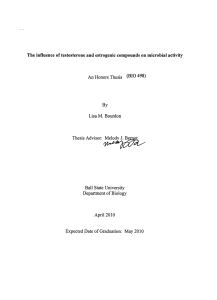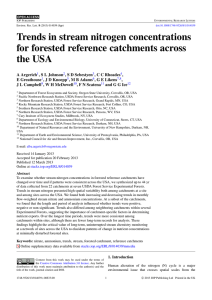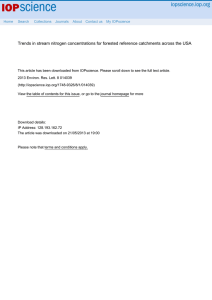ABSTRACT THESIS: STUDENT: DEGREE:
advertisement
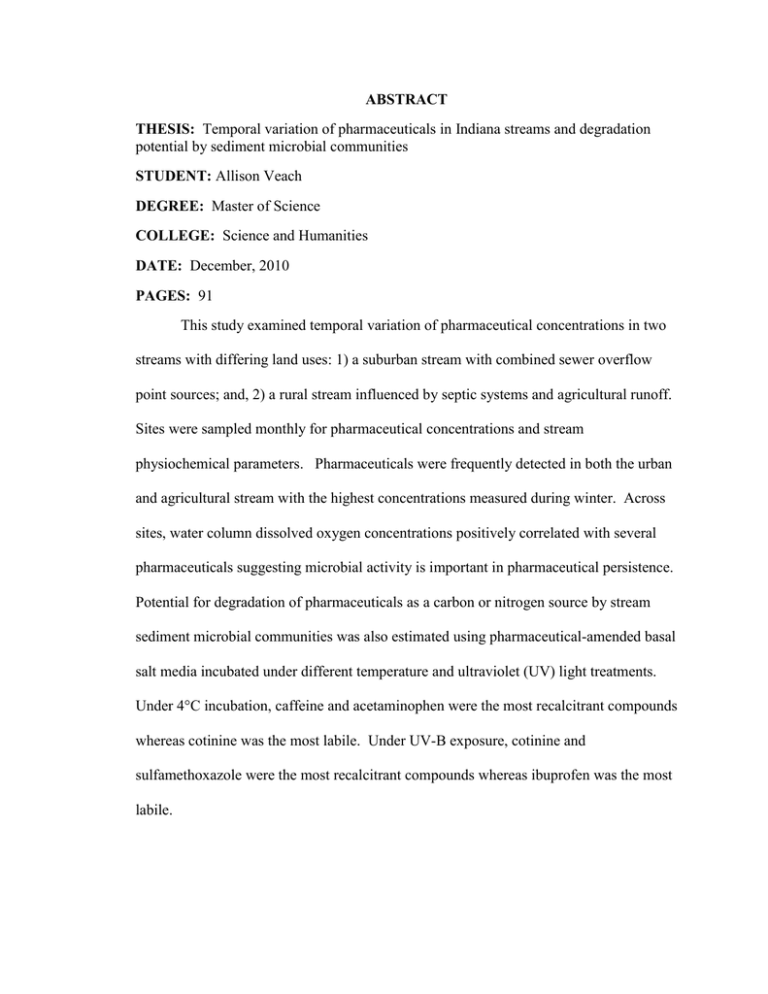
ABSTRACT THESIS: Temporal variation of pharmaceuticals in Indiana streams and degradation potential by sediment microbial communities STUDENT: Allison Veach DEGREE: Master of Science COLLEGE: Science and Humanities DATE: December, 2010 PAGES: 91 This study examined temporal variation of pharmaceutical concentrations in two streams with differing land uses: 1) a suburban stream with combined sewer overflow point sources; and, 2) a rural stream influenced by septic systems and agricultural runoff. Sites were sampled monthly for pharmaceutical concentrations and stream physiochemical parameters. Pharmaceuticals were frequently detected in both the urban and agricultural stream with the highest concentrations measured during winter. Across sites, water column dissolved oxygen concentrations positively correlated with several pharmaceuticals suggesting microbial activity is important in pharmaceutical persistence. Potential for degradation of pharmaceuticals as a carbon or nitrogen source by stream sediment microbial communities was also estimated using pharmaceutical-amended basal salt media incubated under different temperature and ultraviolet (UV) light treatments. Under 4°C incubation, caffeine and acetaminophen were the most recalcitrant compounds whereas cotinine was the most labile. Under UV-B exposure, cotinine and sulfamethoxazole were the most recalcitrant compounds whereas ibuprofen was the most labile.


